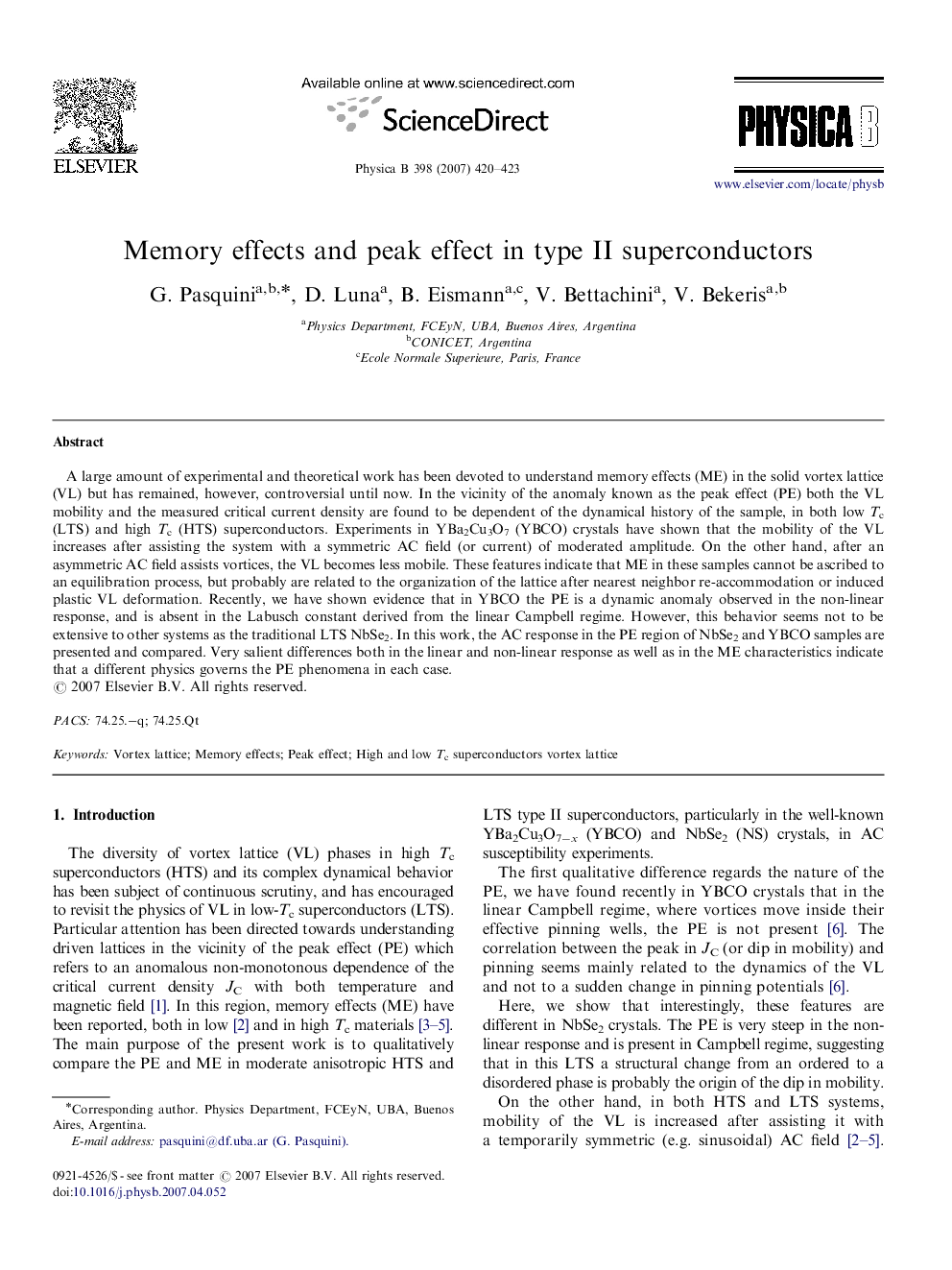| Article ID | Journal | Published Year | Pages | File Type |
|---|---|---|---|---|
| 1815386 | Physica B: Condensed Matter | 2007 | 4 Pages |
A large amount of experimental and theoretical work has been devoted to understand memory effects (ME) in the solid vortex lattice (VL) but has remained, however, controversial until now. In the vicinity of the anomaly known as the peak effect (PE) both the VL mobility and the measured critical current density are found to be dependent of the dynamical history of the sample, in both low Tc (LTS) and high Tc (HTS) superconductors. Experiments in YBa2Cu3O7 (YBCO) crystals have shown that the mobility of the VL increases after assisting the system with a symmetric AC field (or current) of moderated amplitude. On the other hand, after an asymmetric AC field assists vortices, the VL becomes less mobile. These features indicate that ME in these samples cannot be ascribed to an equilibration process, but probably are related to the organization of the lattice after nearest neighbor re-accommodation or induced plastic VL deformation. Recently, we have shown evidence that in YBCO the PE is a dynamic anomaly observed in the non-linear response, and is absent in the Labusch constant derived from the linear Campbell regime. However, this behavior seems not to be extensive to other systems as the traditional LTS NbSe2. In this work, the AC response in the PE region of NbSe2 and YBCO samples are presented and compared. Very salient differences both in the linear and non-linear response as well as in the ME characteristics indicate that a different physics governs the PE phenomena in each case.
